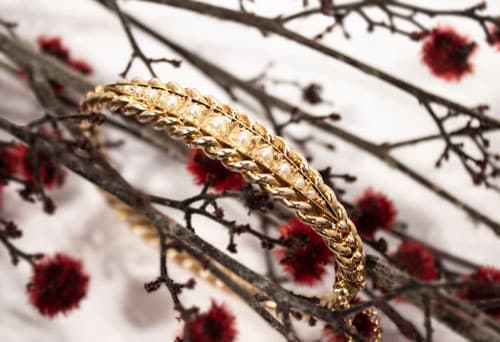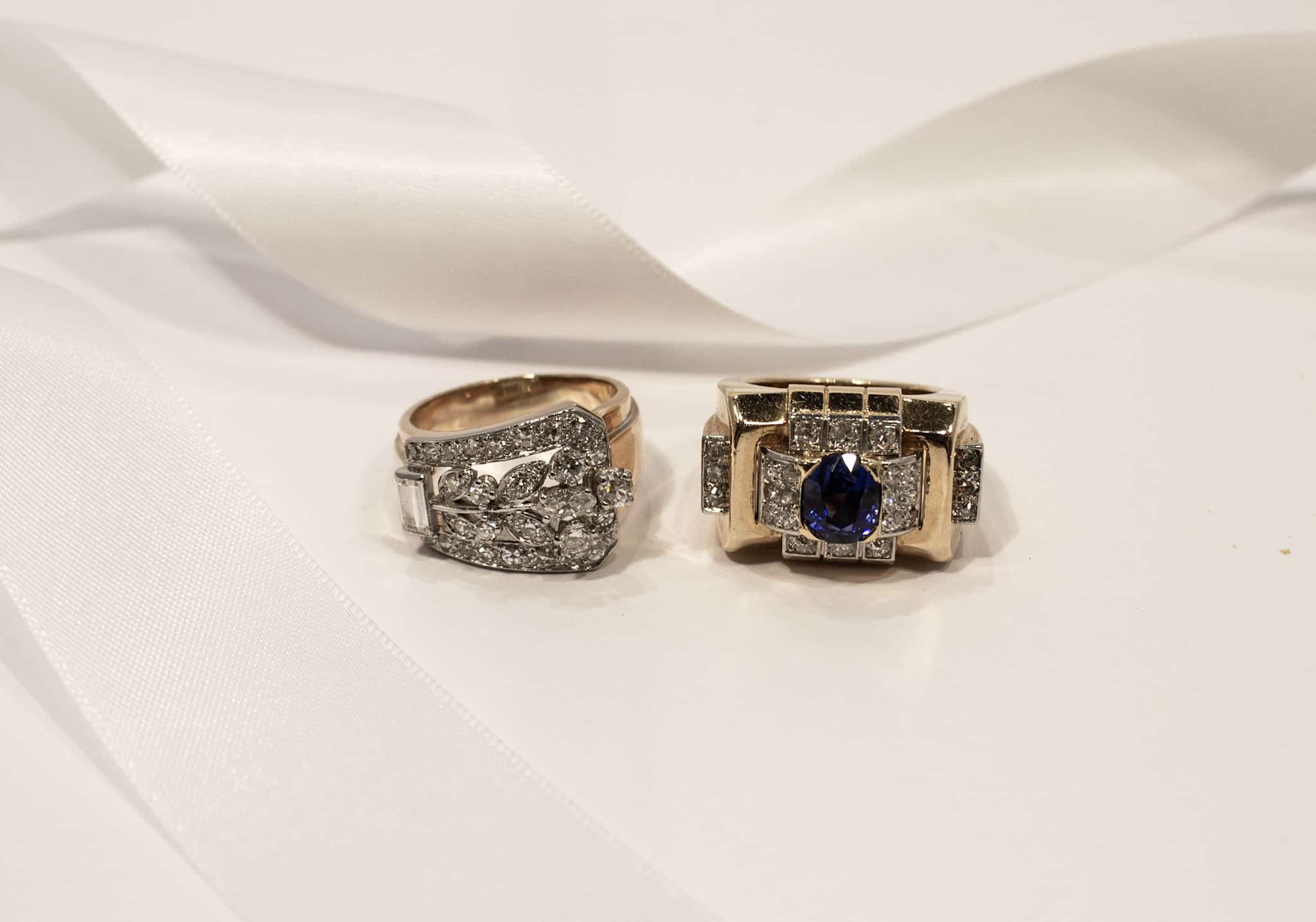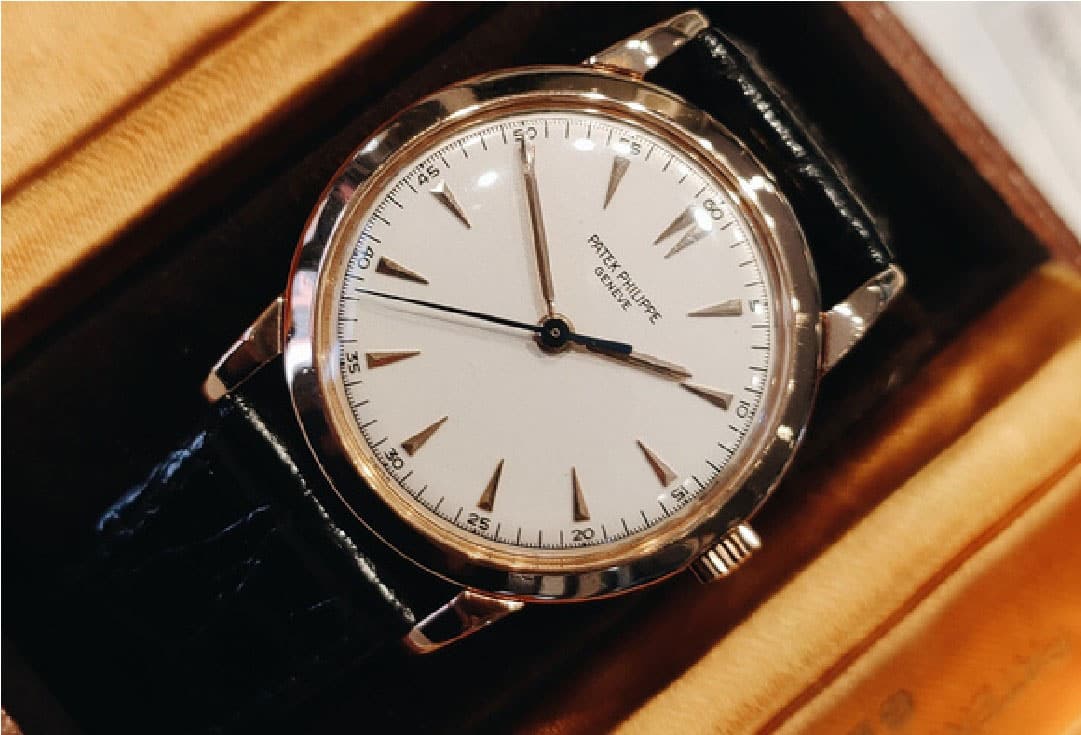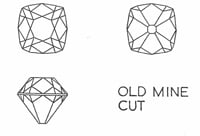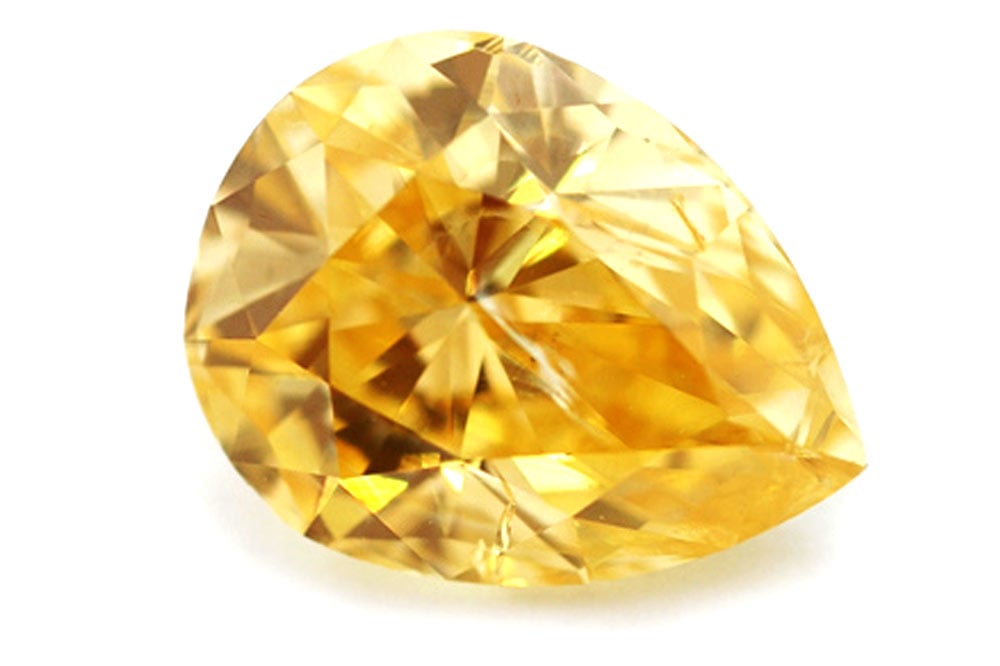
By Damien Kalmar.
Published in Antiques in New South Wales December 2003
Most of us know the shapes of diamonds. These include the emerald cut, heart shaped, pear cut and the ever-popular round brilliant cut to name but a few. Today, with the advent of computers and lasers, diamonds can be made into much more fanciful shapes, such as a sailing boat or even your own initial.
But what about 100 years ago? Or 300 years ago, or even several centuries before, when diamond cutting was as primitive as the tools used? This article delves briefly into the history of diamond faceting throughout he ages, and looks at cuts that are now found in a museum, an antique store or even on your own finger right now!
Diamonds have been known since as early is 1,000 to 400 BC in the dry riverbeds of India. However, it wasn't until the 11th Century in Europe, that the first real attempts at diamond cutting began. The point cut was achieved by rubbing the diamond crystal, in this case an octahedral-shaped diamond crystal, against another diamond to produce an eight-sided stone.
The 14th Century saw the introduction of the table cut, a diamond squared in shape, with a total of eight facets. Earlier point-cut diamonds were now re-cut into this more “modern" cut, and today this practice of re-cutting older style diamonds into new modern shapes continues.
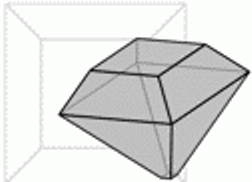
Table cut diamond
Various other modifications of this cut were made. However, the next major step in diamond fashioning was the introduction of the rose cut. The design resembles a rose bud, comprising of a flat base with a number of triangular facets arranged in rows above each other, meeting at a sharp point in the centre.
First manufactured in India at the end of the 15th Century, this cut was perfected at the diamond cutting workshops in Antwerp and Amsterdam, and was very popular during most of the 16th and 17thcenturies.
Example of the rose cut diamond from the side and the top.
Because the base of the diamond was flat, stones were often foiled back to improve the brilliance of the stone. This was achieved by applying foils or tints to the base of the stone.
For a number of years, diamond cutters experimented with variations of the rose cut, resulting in some truly amazing cuts, such as the Dutch rose, half-Dutch and the boat- shaped rose.
In the early 1640's, the old single cut was introduced, consisting of between 18 and 30 facets per stone, depending on the shape of the diamond crystal. Today, the round brilliant cut has 58 facets. The most notable changes were two important features; a table, the flat top of the stone, and a pavilion, an inverted triangular base.
In the mid-17th Century the Mazarin cut diamond was invented. Due to more facets, this resulted in an improvement in brilliance compared to the earlier table and point cut diamonds.
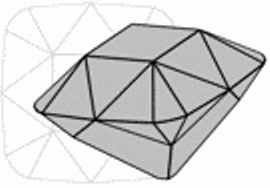
Mazarin cut diamond
The world is introduced to the Brilliant Cut.
At the start of the 18th century, a great leap forward emerged with the “invention" of the new 58-facetted diamond. At the time, these were the closest resemblance to today's brilliant cut, and are referred to as old mine cuts, or old miners. These were cut often squarish or cushion shaped, with quite a steep angle on the crown and pavilion, to maximise weight retention. As well as these features, the "old miners" often had quite a large culet or collet, the horizontal base formed by the blunting of a point when the stone is cut as a brilliant.
Images of the old mine cut diamonds.
During the mid 19th century, the old European cut came into focus, and was an attempt to change the old mine cut stones into a more perfect round cut. These stones can be considered as the first true round brilliant cut diamonds. The facets from the old miners were kept in their same position, but changed shape to a more round and evenly shaped stone.
The culets became smaller, as it was realised that light could leak out from this point in the stone. The development of the modern brilliant cut occurred in the early part of the 20thcentury with further modifications through the century. Diamond cutters apply the brilliant cut to other shapes, and this very exacting skill continues to enthrall craftsman and enthusiasts alike.
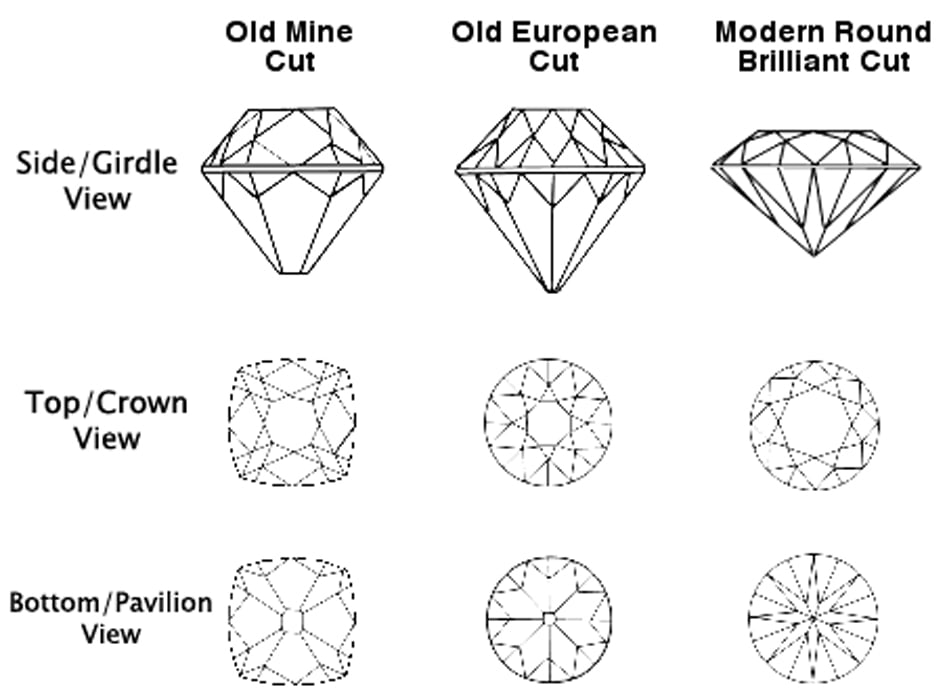
Old European cut diamonds
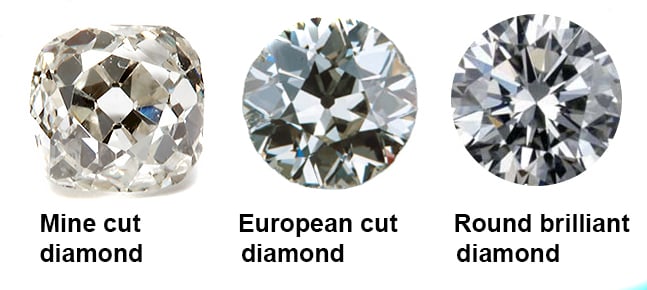
Antique cut diamonds
There is another important cut of diamond that is often found in antique jewellery, which is the single cut diamond. These are small diamonds usually around 0.01 carats to 0.05 carats and are often found on the shoulders of rings or surrounding a centre stone for example. While today modern technology will allow for a 0.01 carat diamond to have 58 facets and be a round brilliant cut diamond, single cut diamonds were used from the later part of the 19th Century up until around the 1930's-1940's. Commonly found with eight facets on the top (the crown) and eight facets on the bottom (the pavilion) these are sometimes found with total facets between 16 to 18.
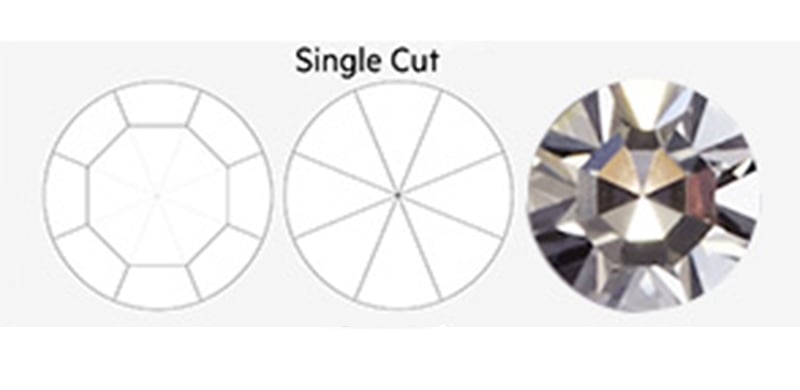
Single cut diamonds
In recent years there has been such a resurgence for genuine antique cut diamonds, especially for engagement rings as many people realise that there is such a charm and character about antique cut diamonds, and although the reality is that they don't sparkle as great as a modern round brilliant cut diamond, antique cut diamonds have a style and character all of their own that can never be matched.

